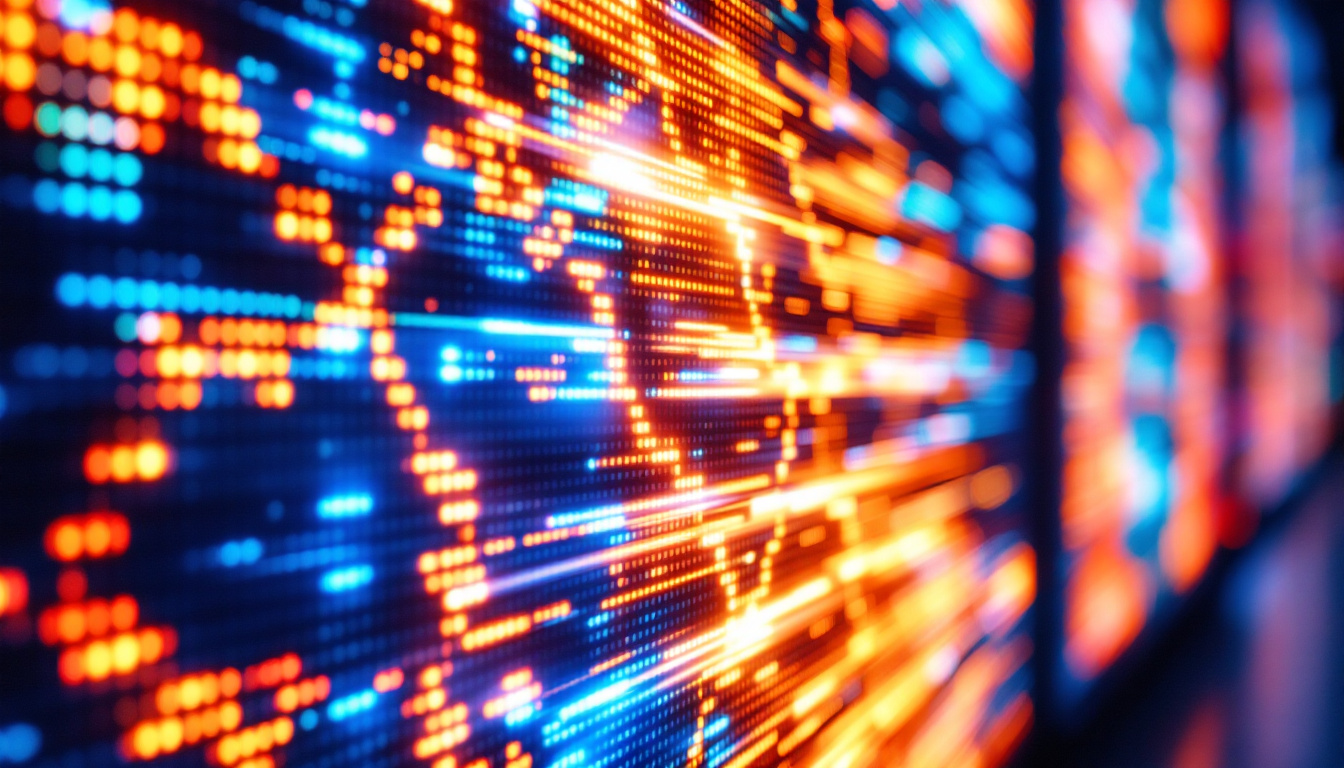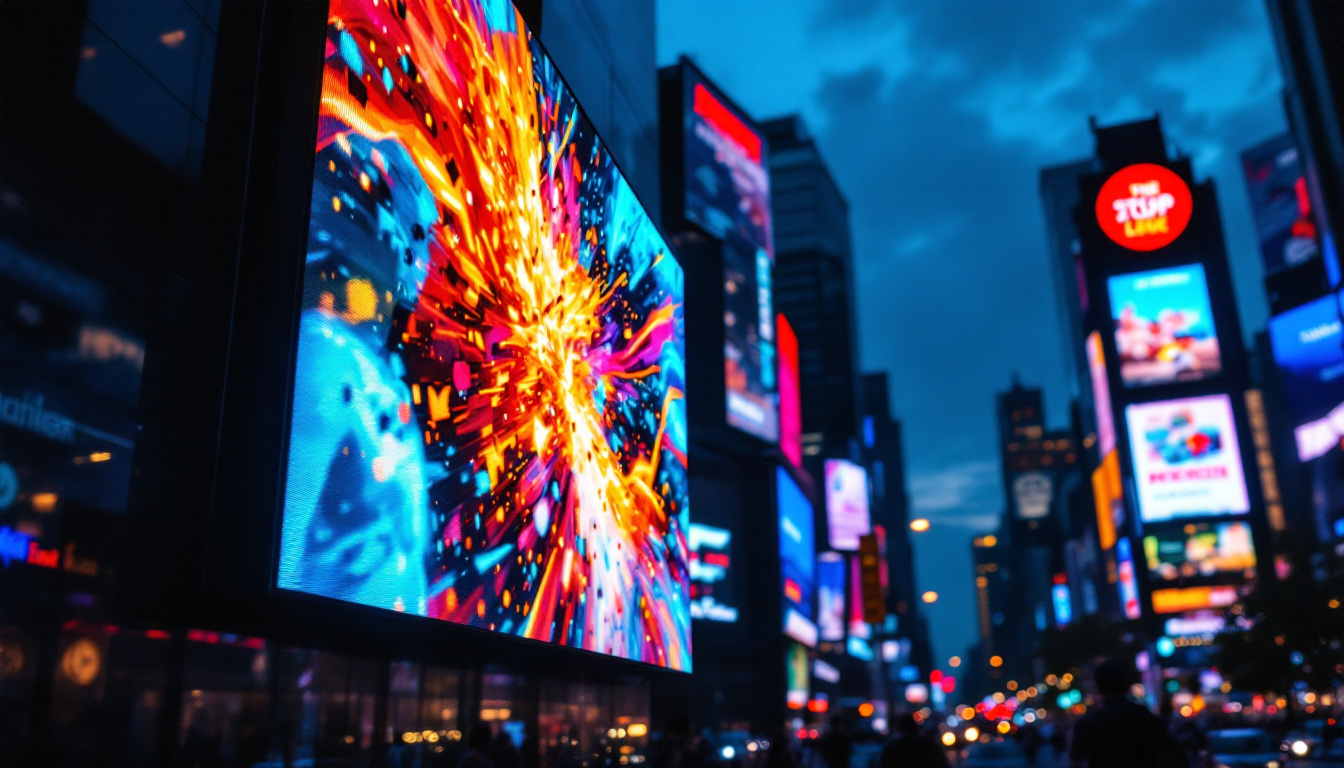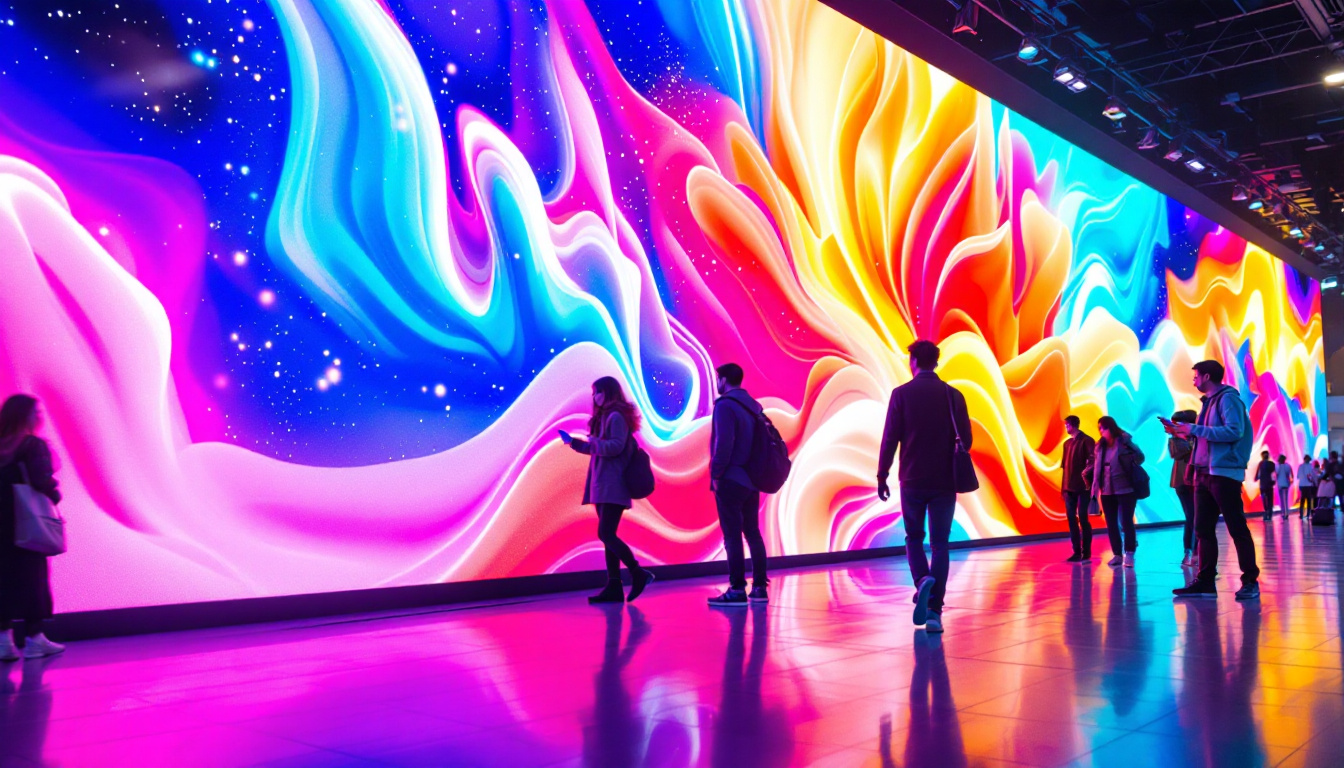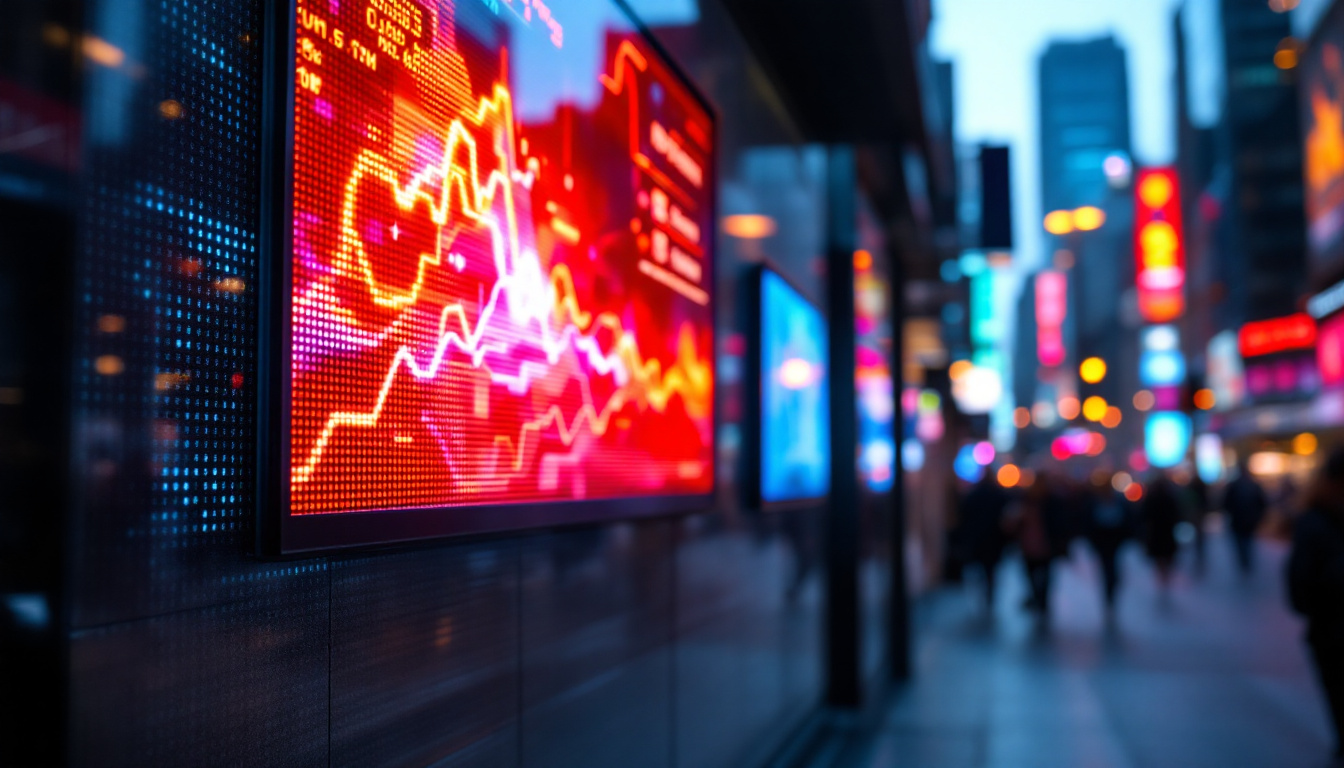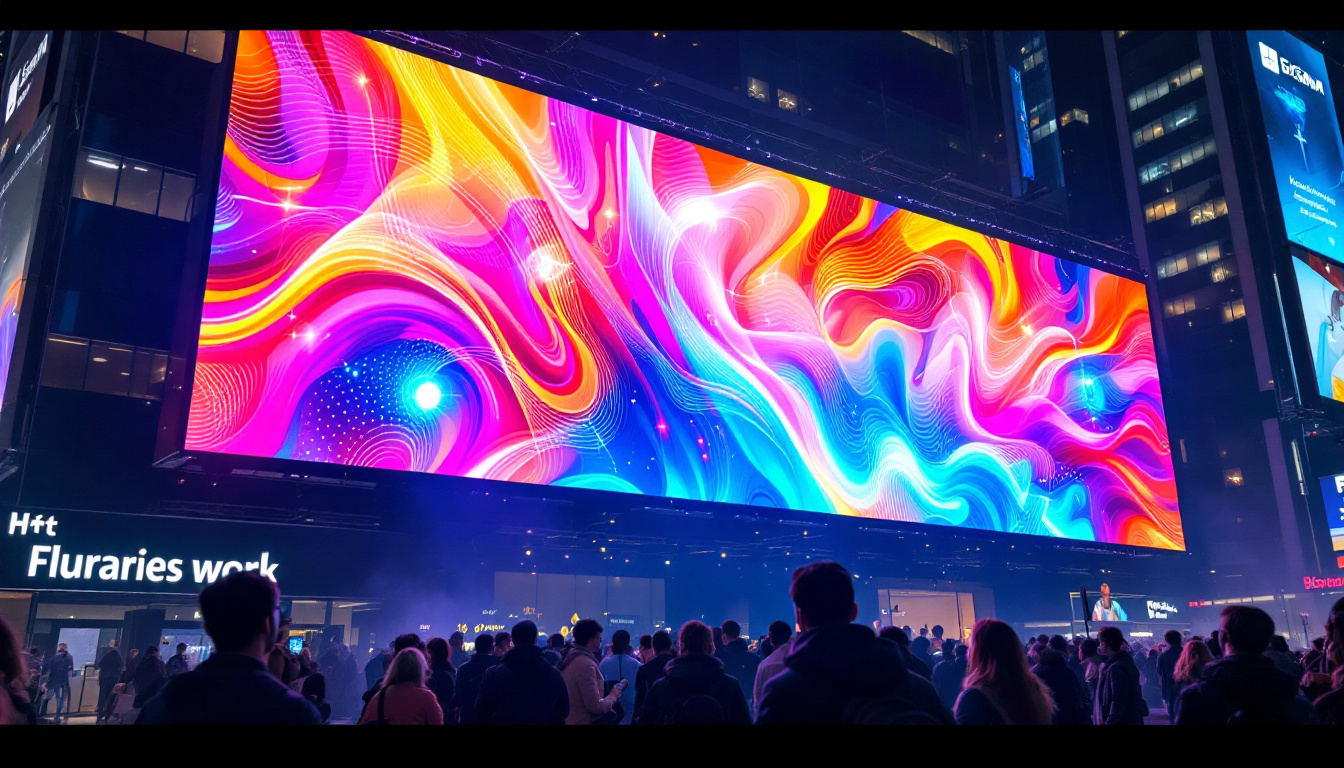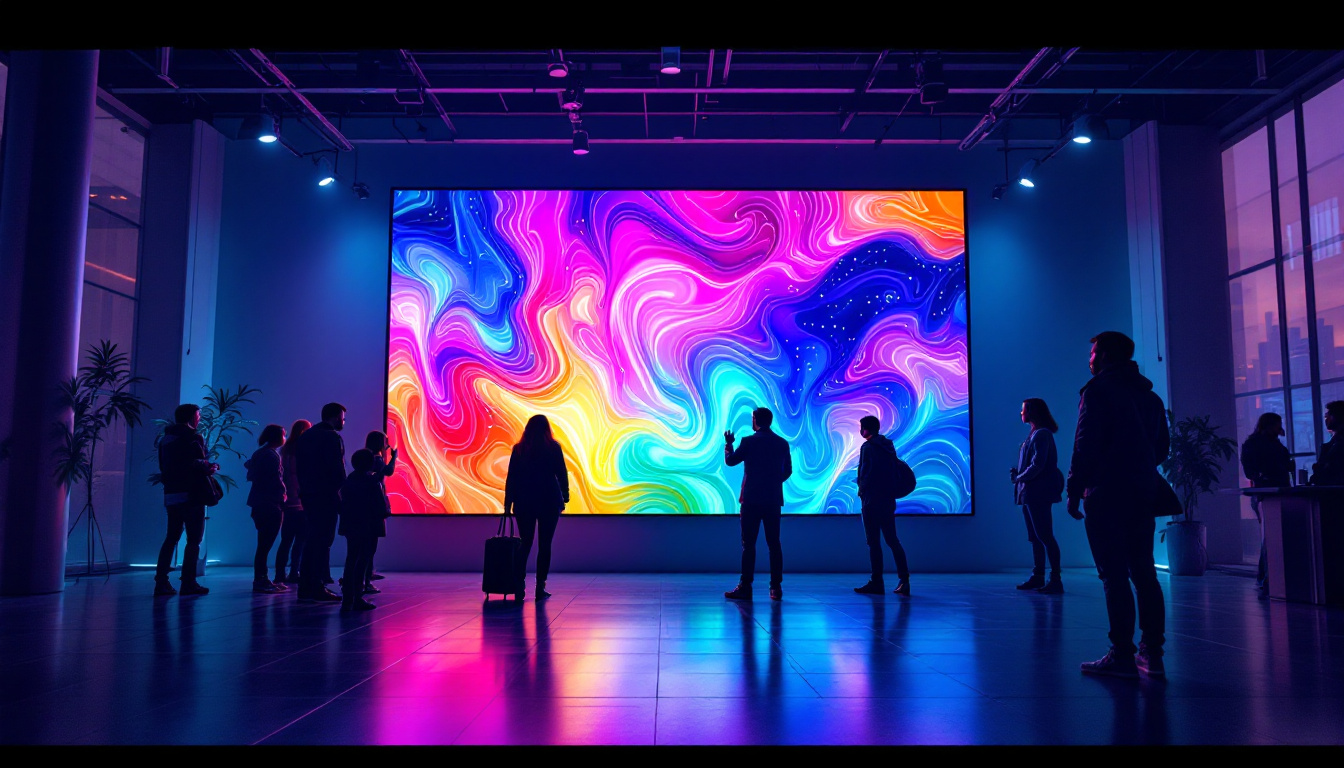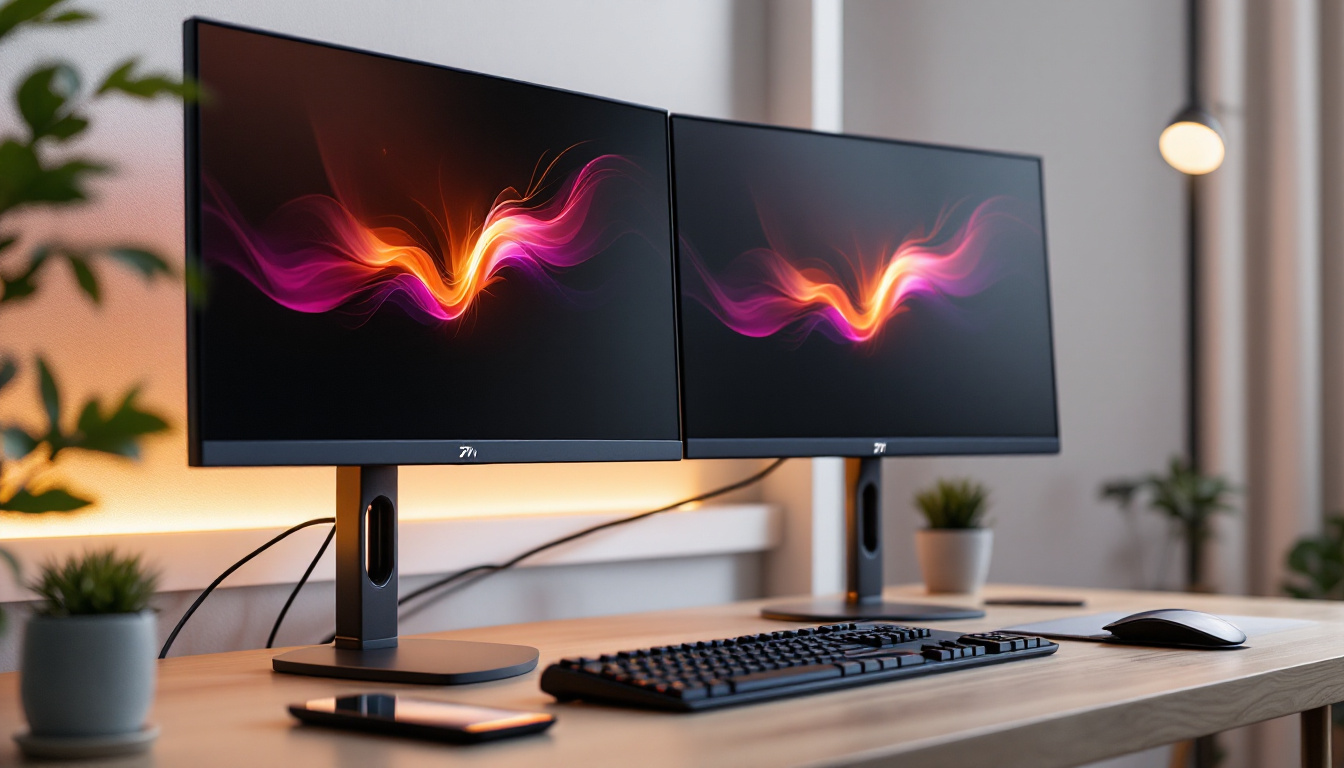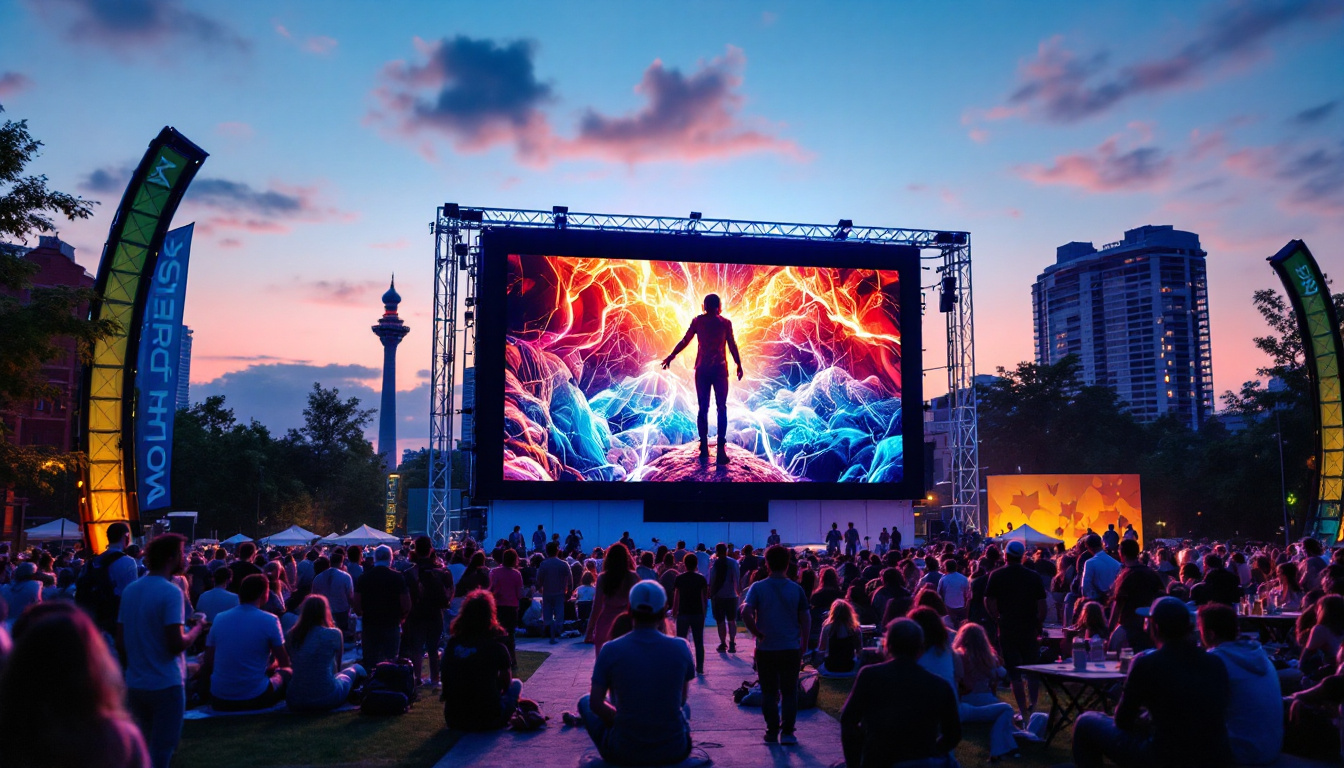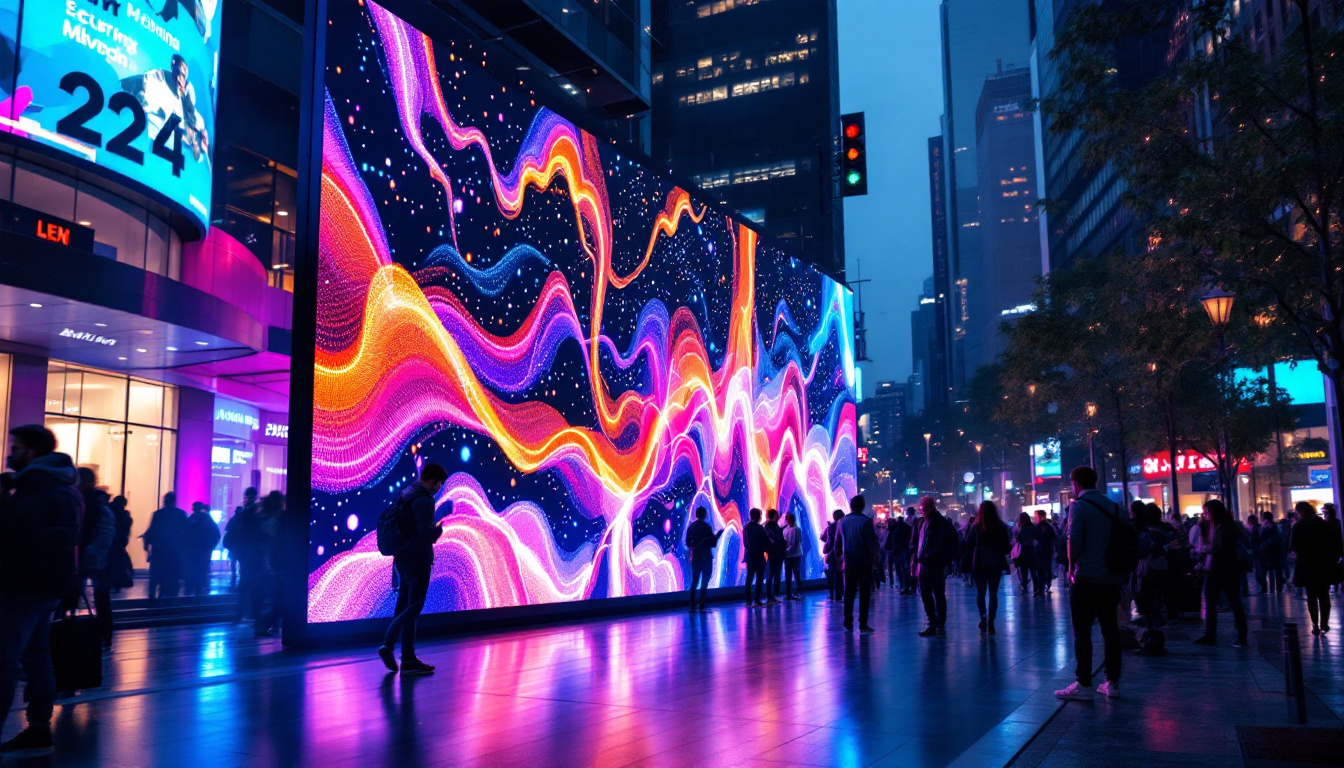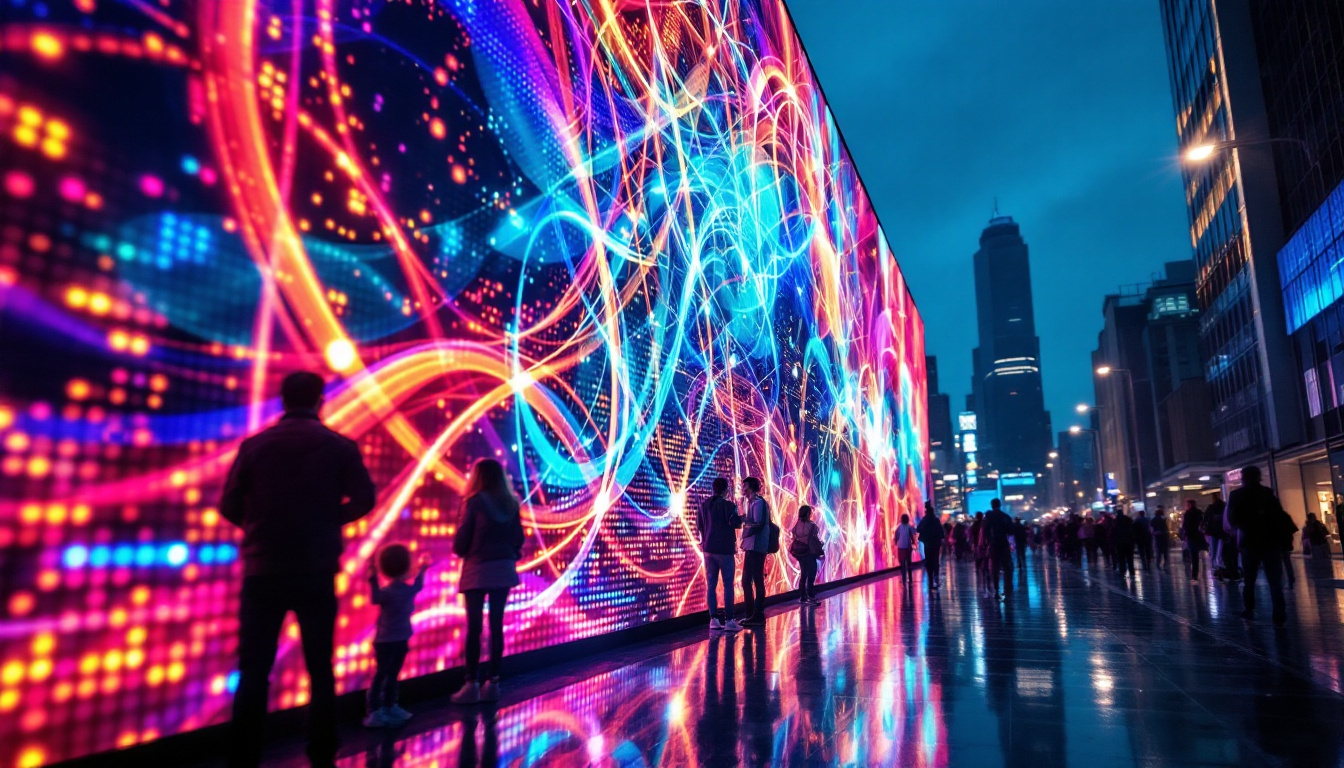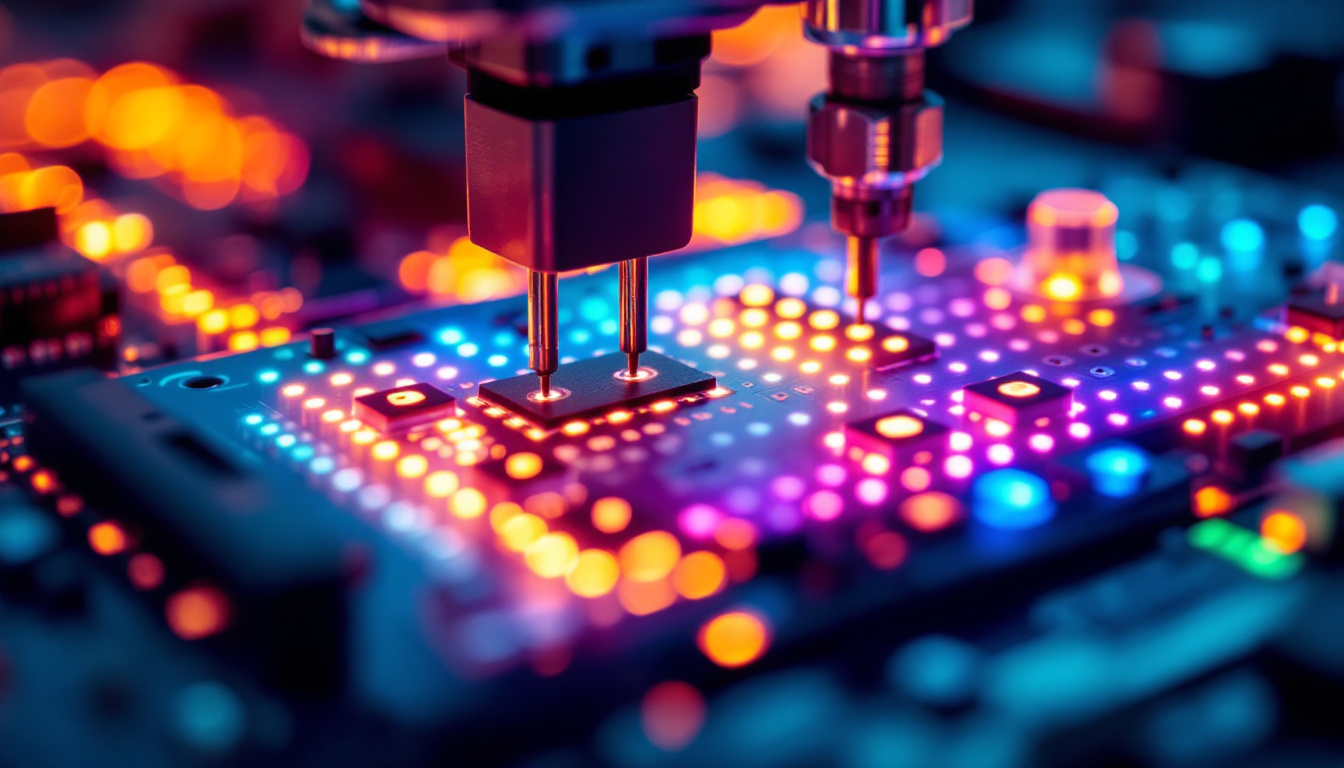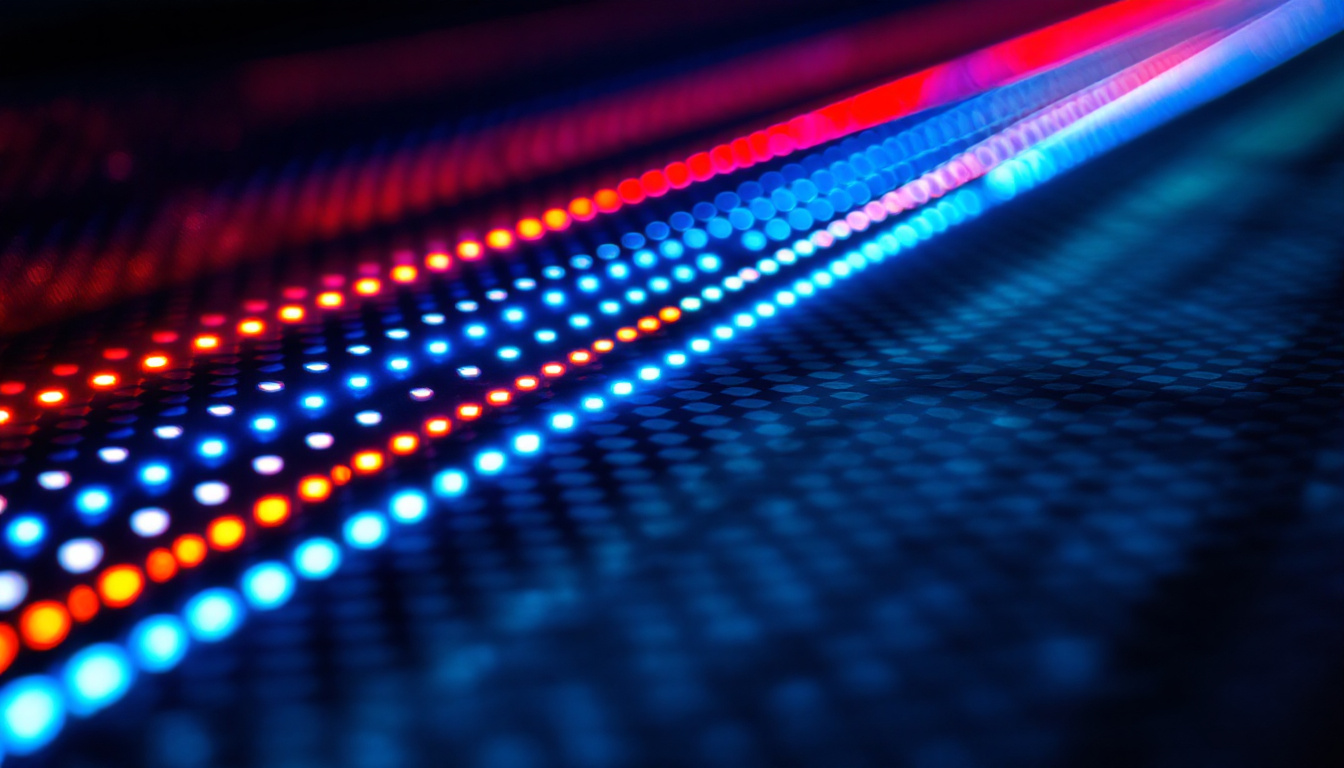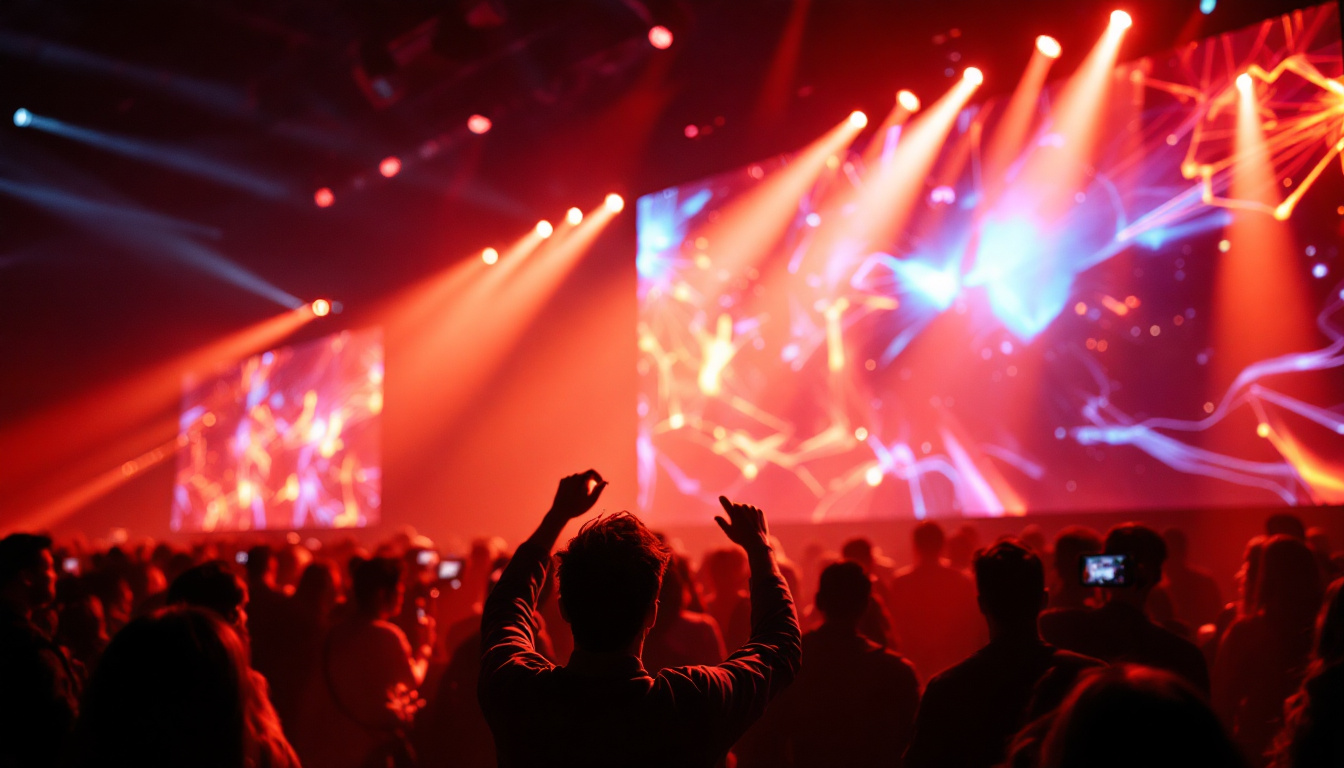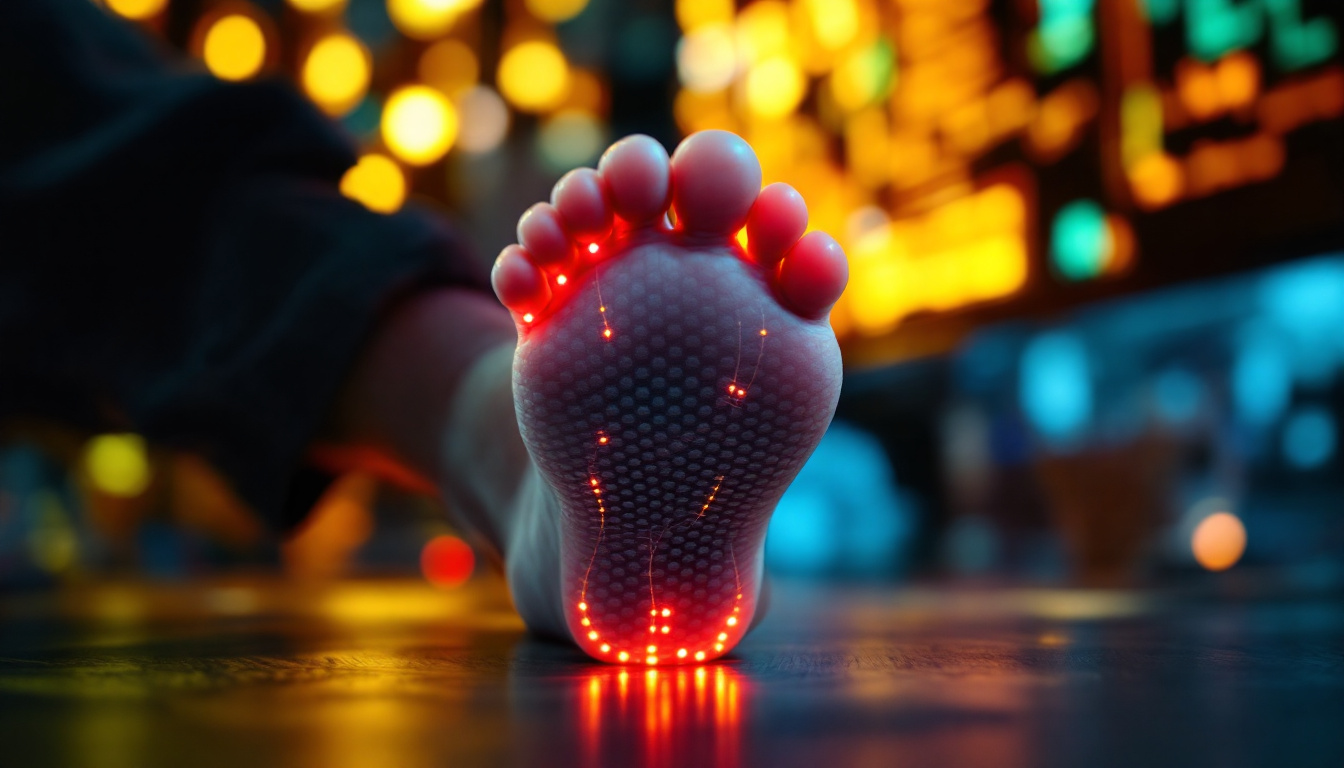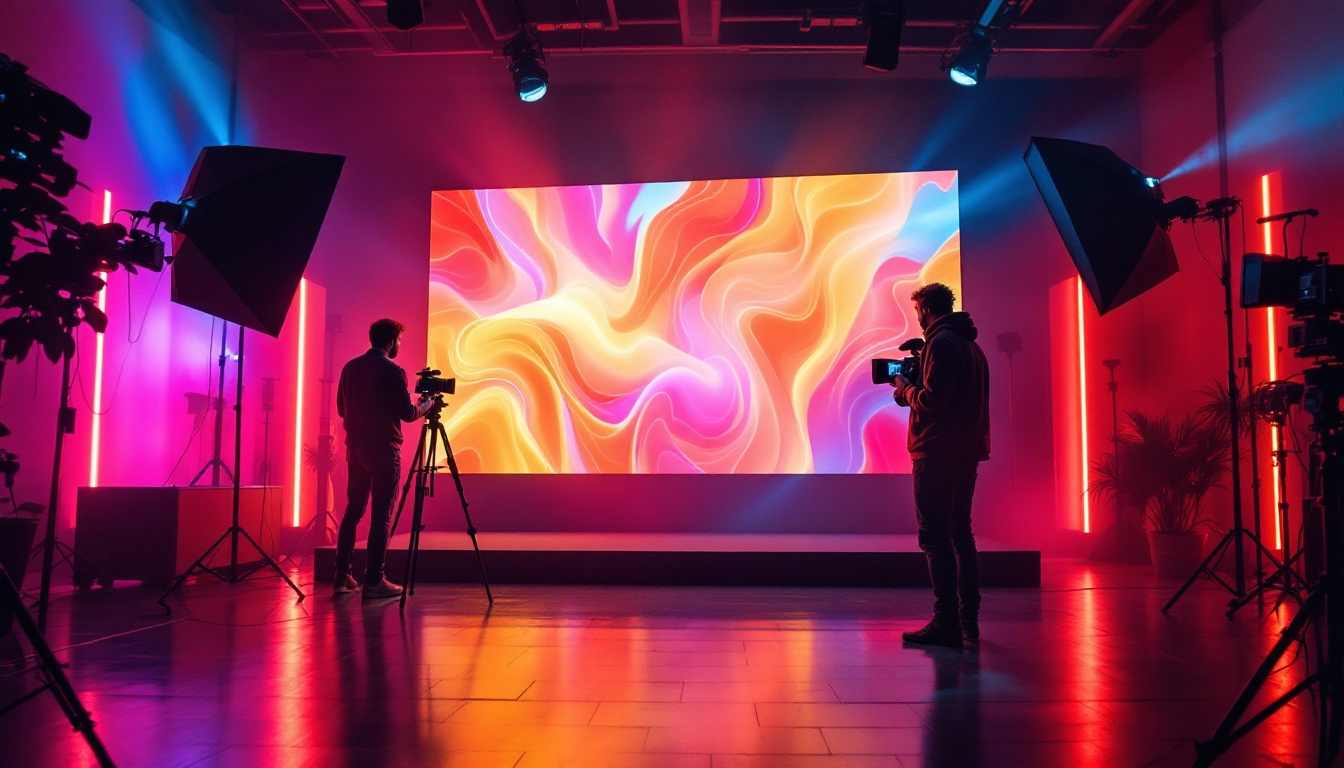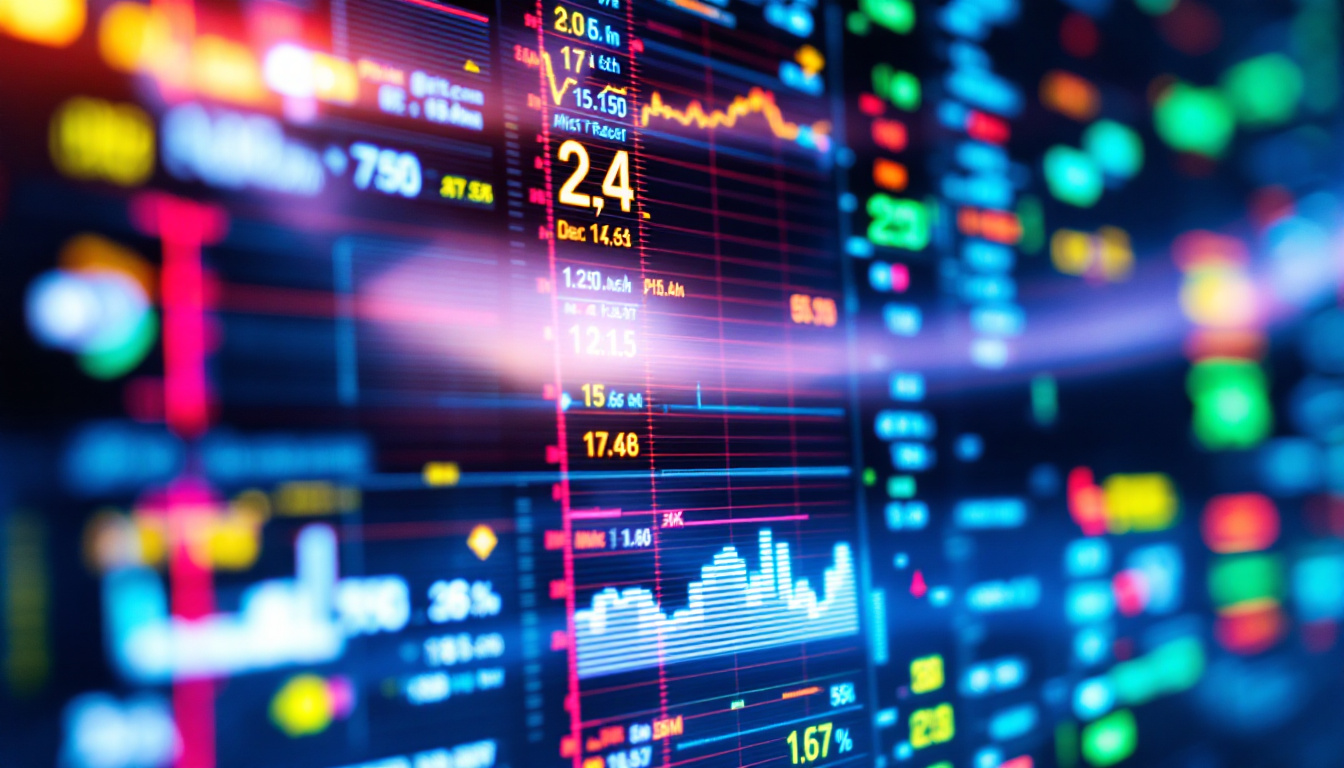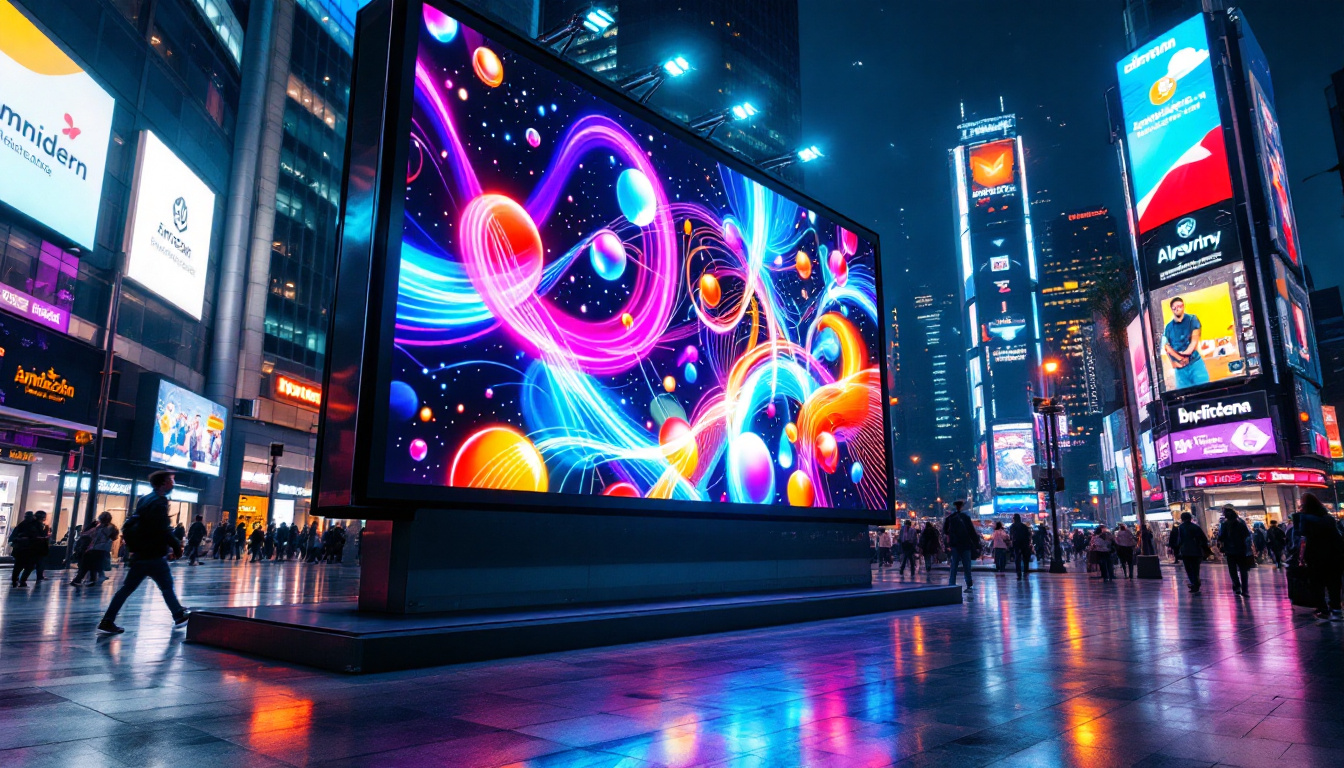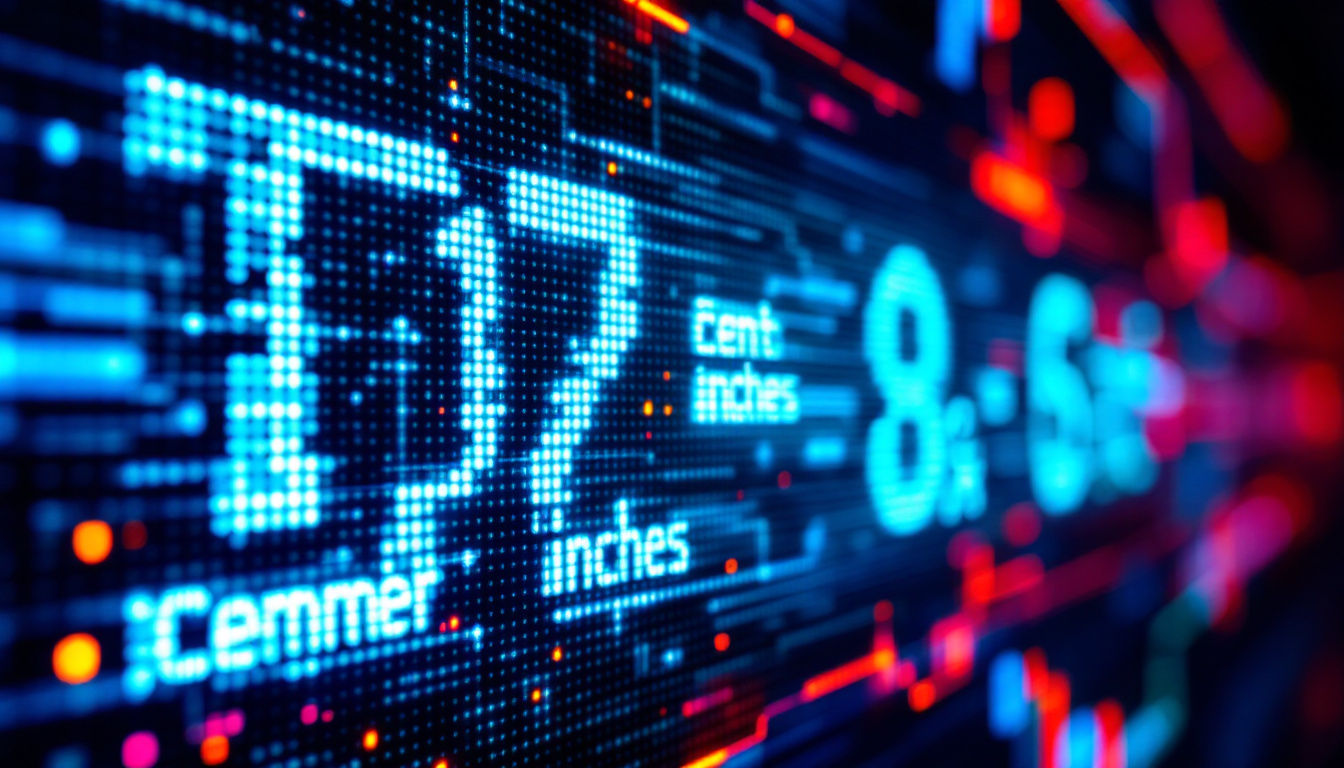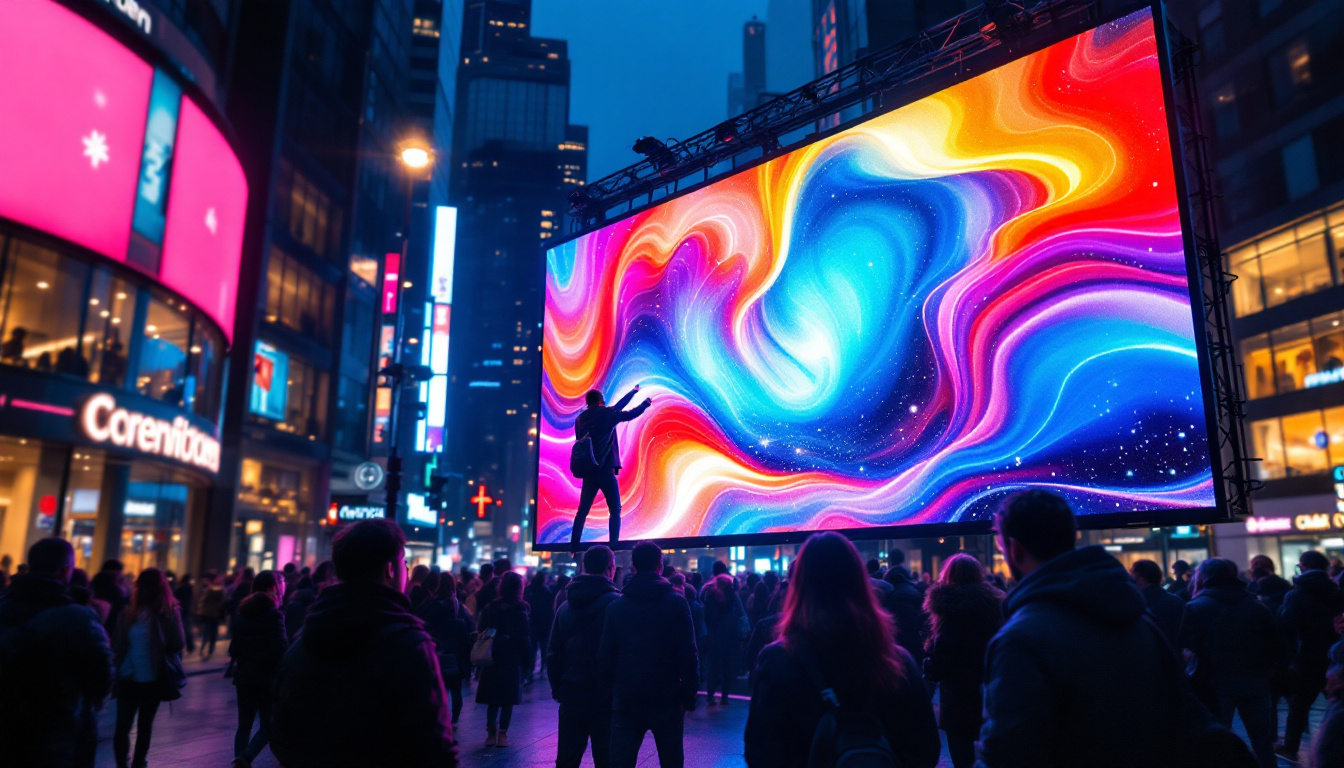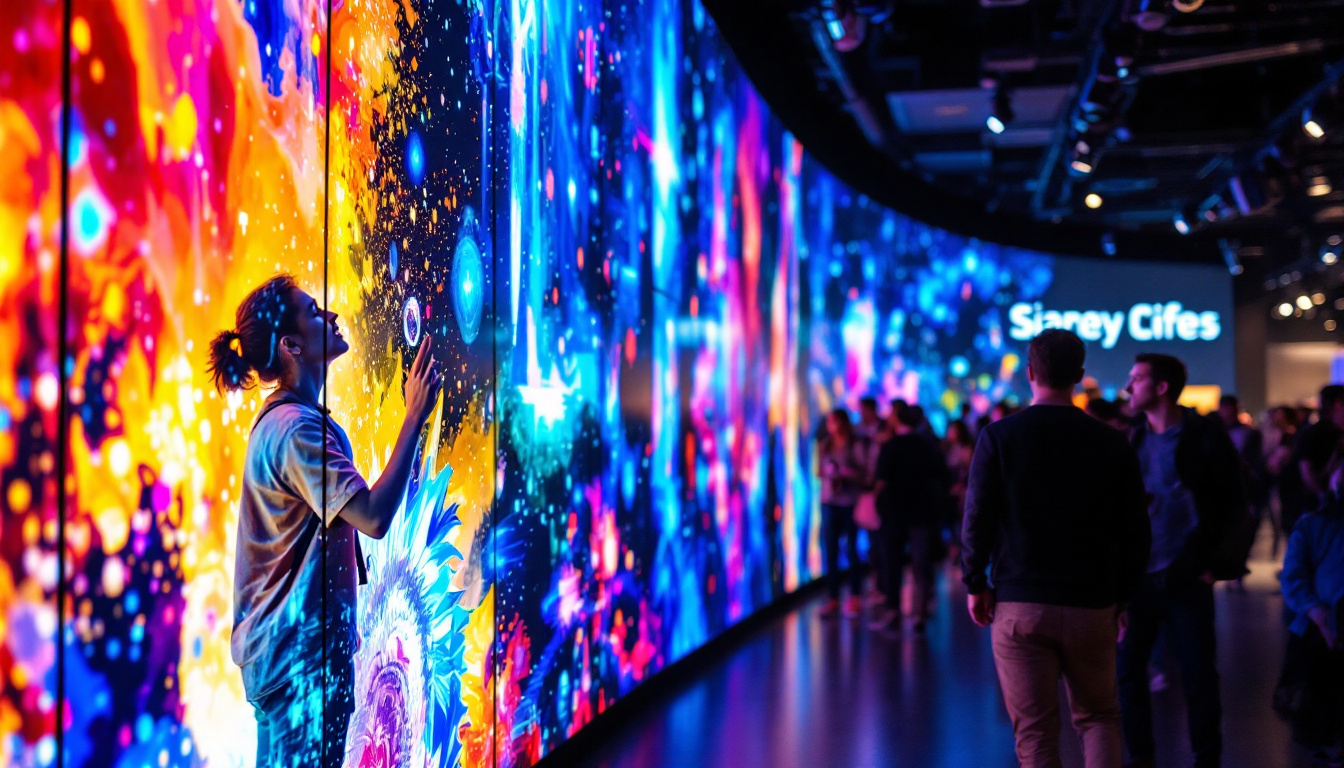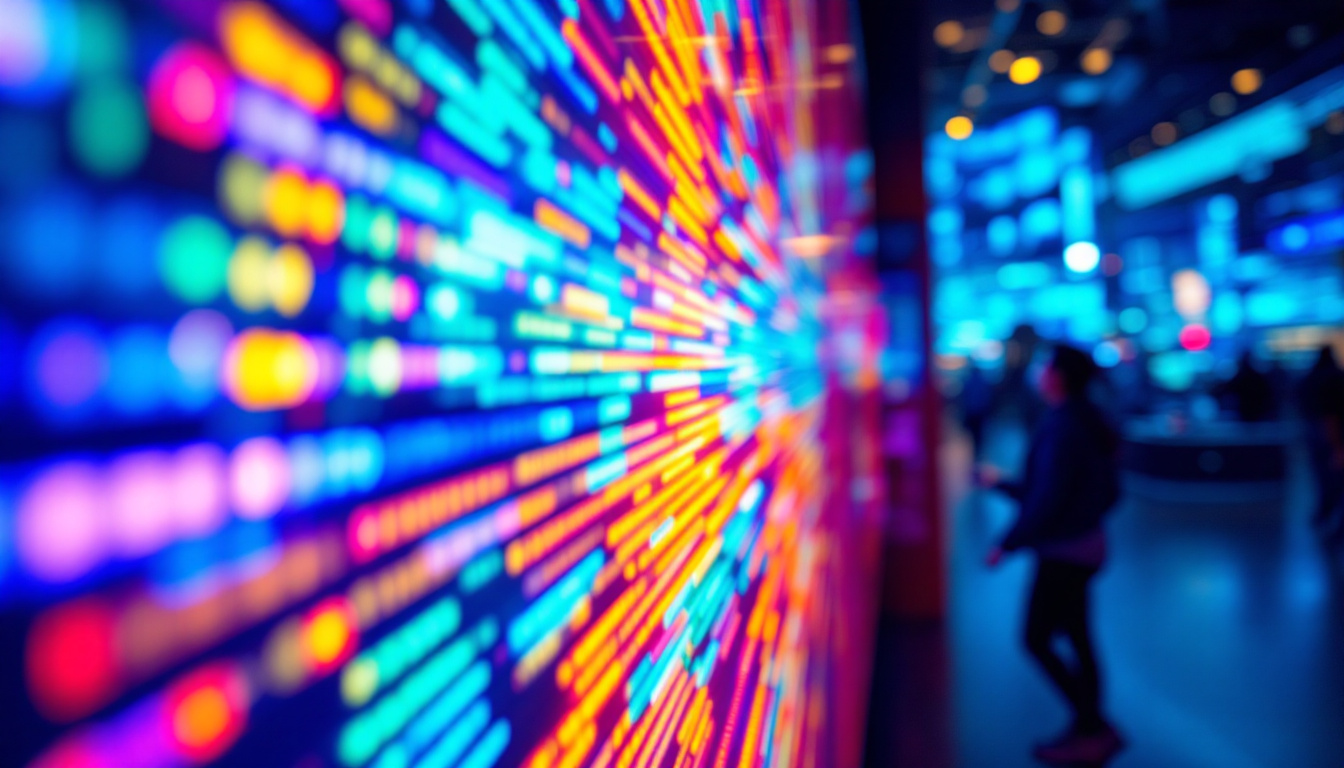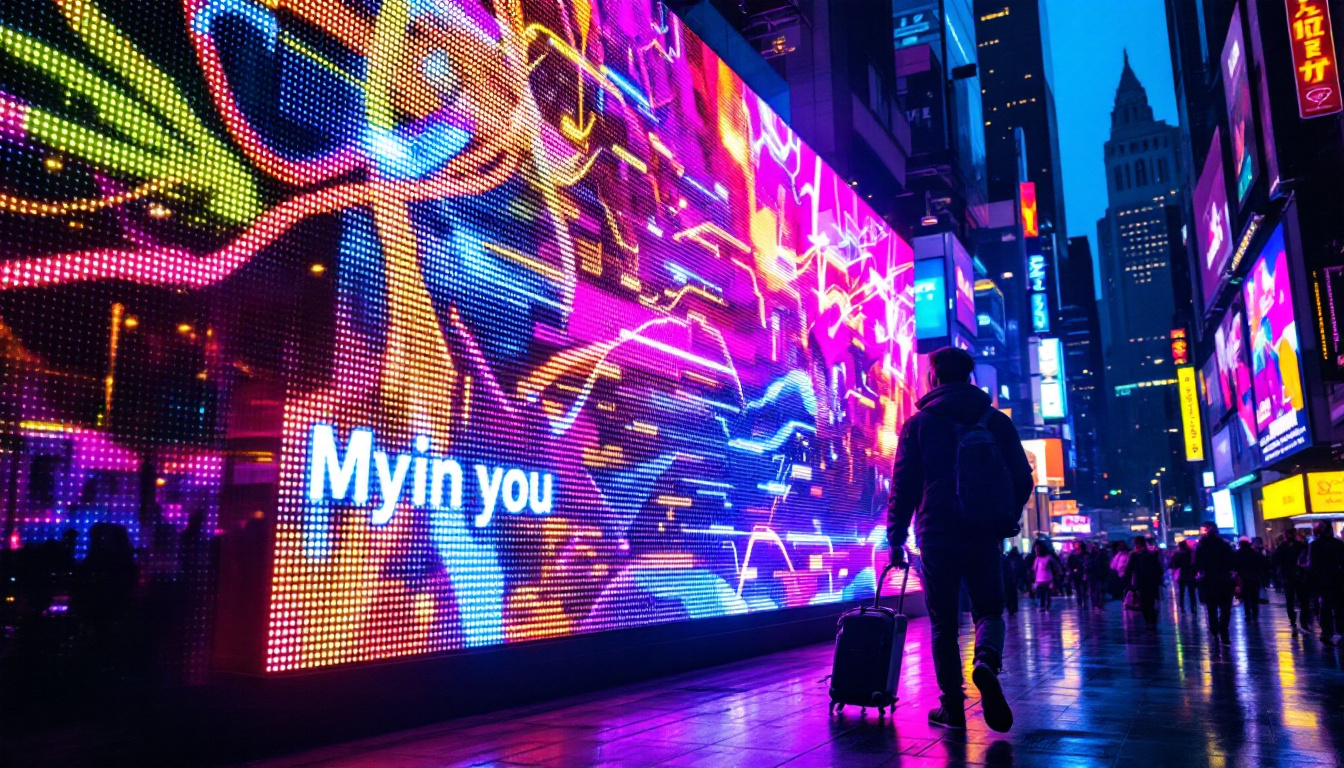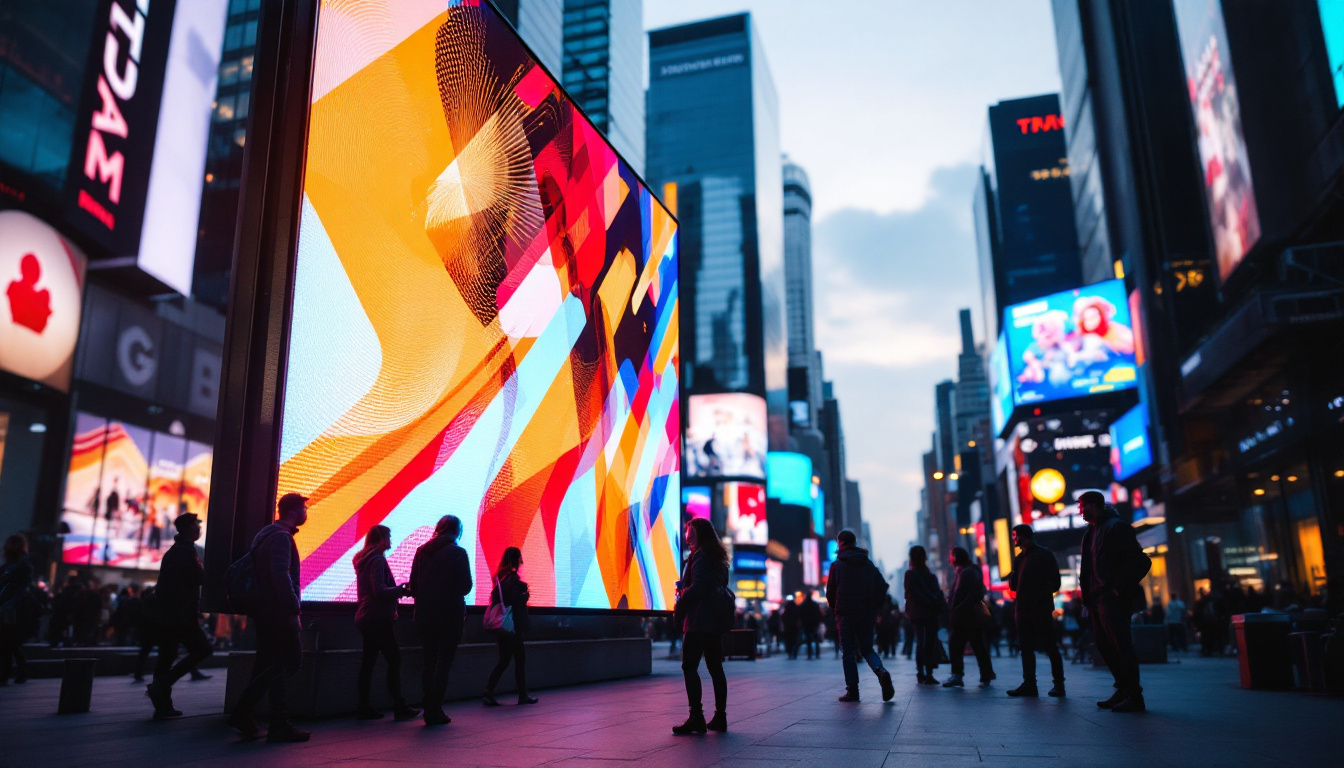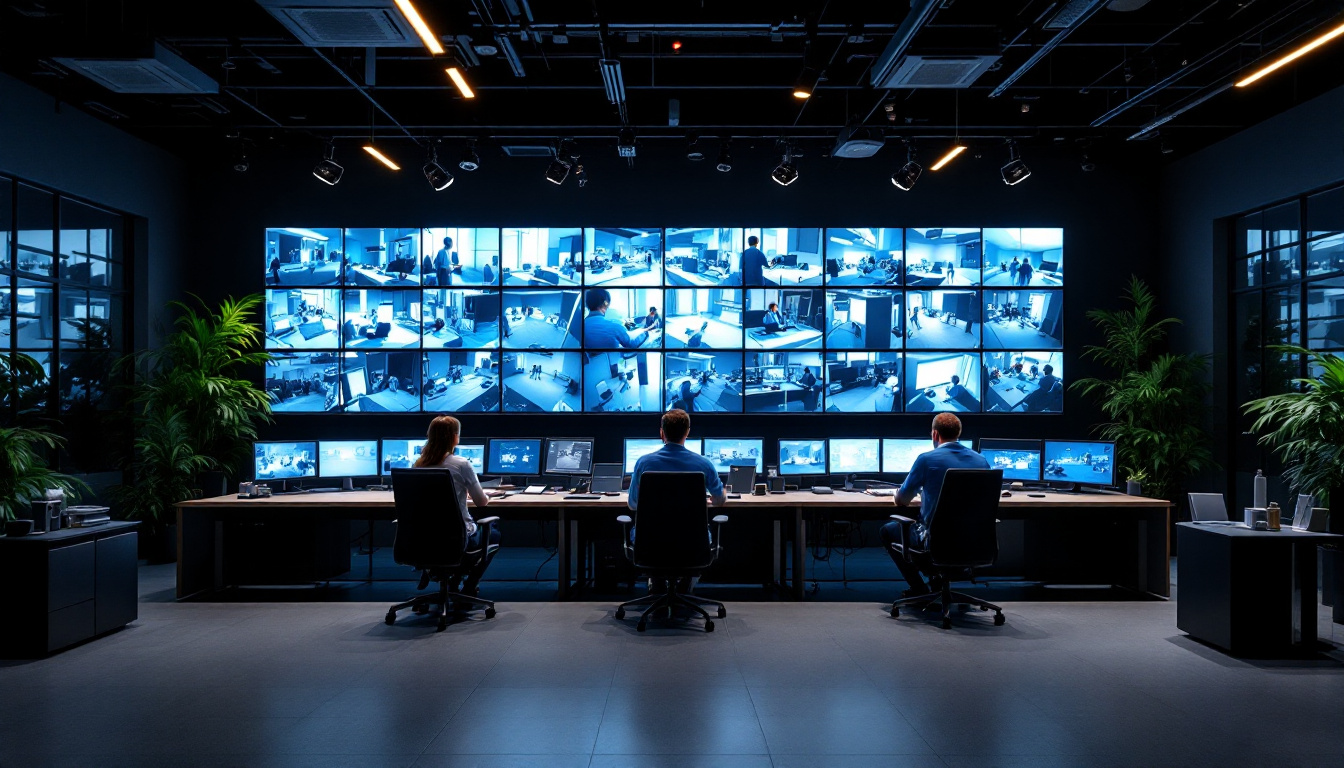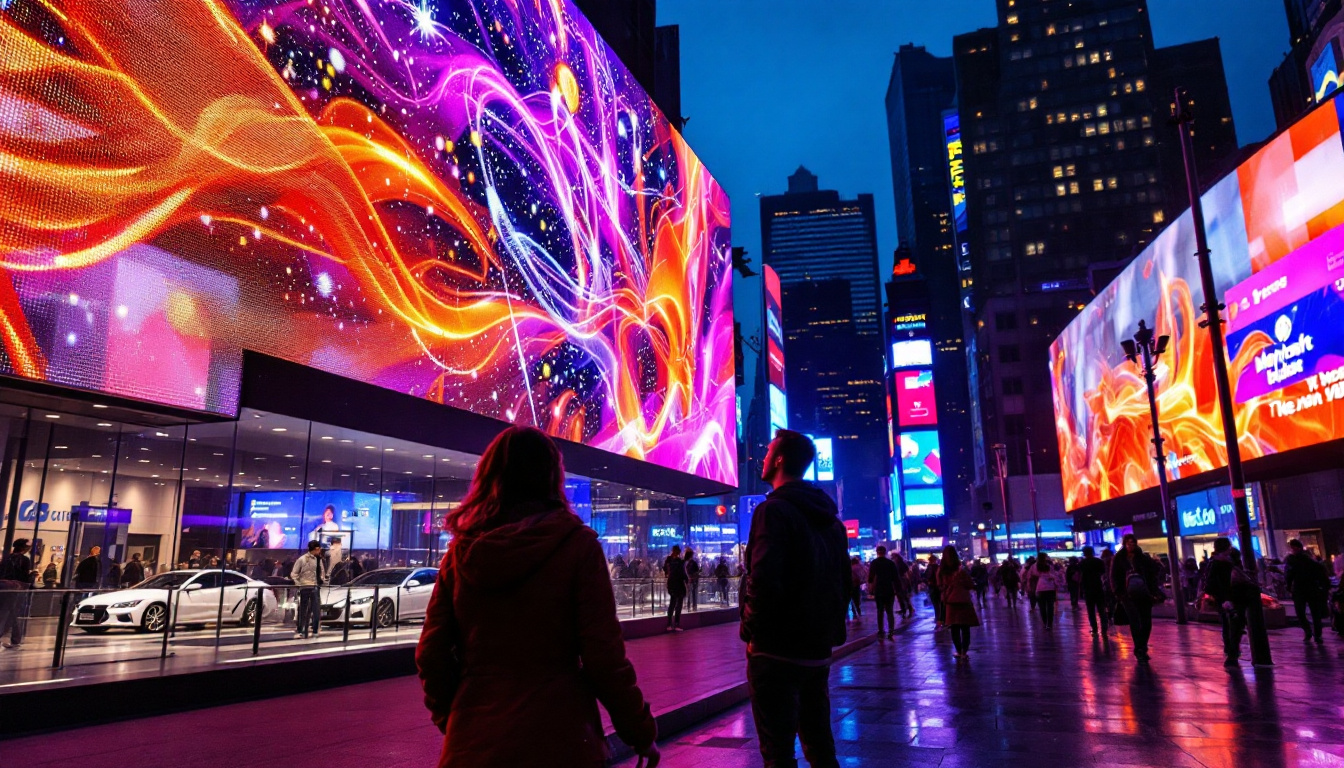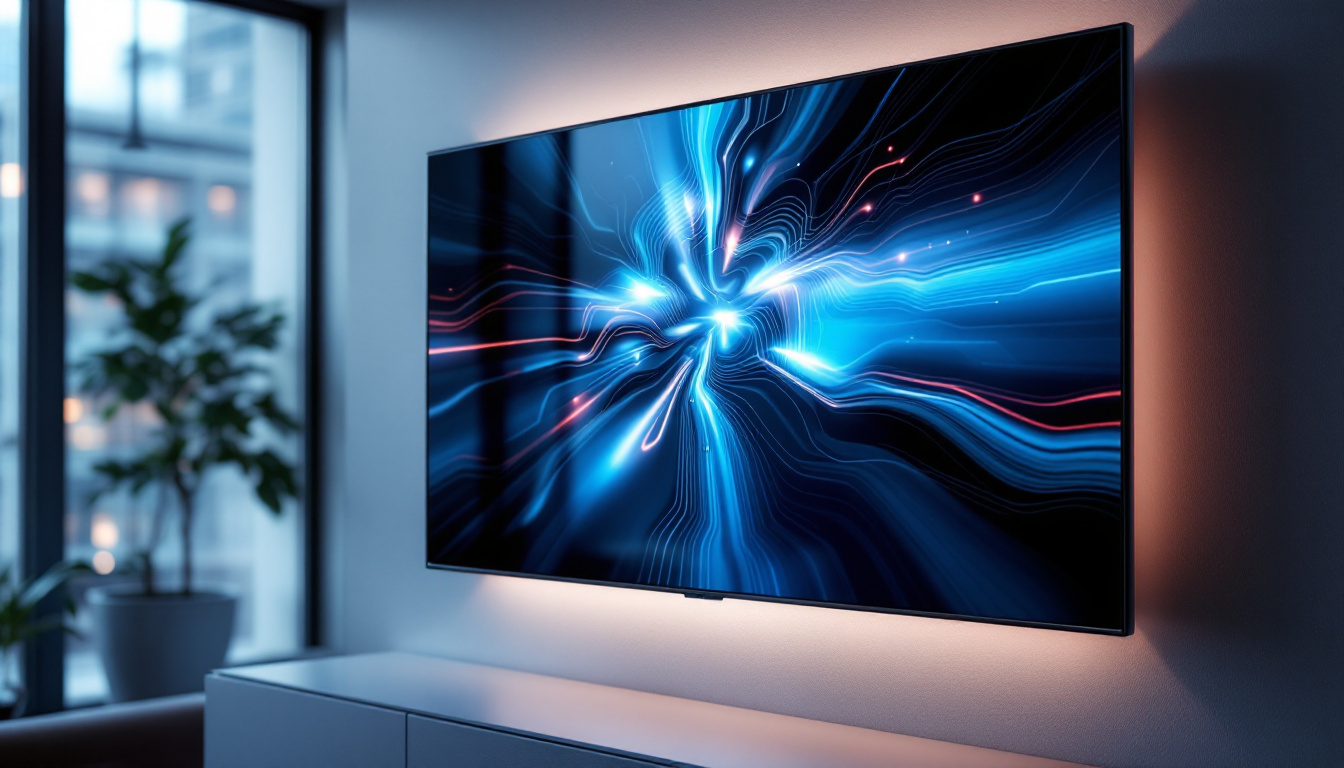In the ever-evolving world of technology, the concept of wallpaper has transcended its traditional boundaries. Enter the realm of LED displays, which are revolutionizing the way we perceive and interact with our environments. This article delves into the intricacies of LED display technology, exploring its applications, advantages, and the future it promises.
Understanding LED Display Technology
LED, or Light Emitting Diode, is a semiconductor device that emits light when an electric current passes through it. This technology has been harnessed to create vibrant and dynamic displays that can be used in various settings, from commercial spaces to home environments. The versatility and efficiency of LED displays have revolutionized the way we interact with visual media, making them a staple in advertising, entertainment, and information dissemination.
How LED Displays Work
At the core of LED display technology is the arrangement of tiny LED bulbs, which are grouped together to form pixels. Each pixel consists of red, green, and blue (RGB) diodes that combine to produce a full spectrum of colors. When these pixels are illuminated in different combinations, they create images and videos that are vivid and engaging. The precision with which these colors can be mixed allows for an impressive range of hues, making LED displays capable of producing stunning visuals that captivate audiences.
The process begins with a signal being sent to the display, which dictates how each pixel should light up. This rapid switching of pixels allows for high refresh rates, making LED displays ideal for dynamic content such as videos and animations. Furthermore, advancements in technology have led to improvements in energy efficiency and lifespan, with many LED displays now boasting thousands of hours of operational life while consuming significantly less power compared to traditional display technologies.
Types of LED Displays
LED displays come in various forms, each designed for specific applications. The most common types include:
- Direct View LED Displays: These are often used for large outdoor billboards and screens, providing high brightness and visibility even in direct sunlight. Their robust construction allows them to withstand harsh weather conditions, making them a popular choice for sporting events and concerts.
- LED Backlit Displays: Common in televisions and monitors, these displays use LEDs to illuminate an LCD panel, enhancing color and contrast. The backlighting technology has evolved to include local dimming features, which improve black levels and overall picture quality, resulting in a more immersive viewing experience.
- Flexible LED Displays: These innovative displays can be bent and shaped, allowing for creative installations that were previously impossible. Their adaptability has opened new avenues in design, enabling artists and advertisers to create unique visual experiences that engage viewers in novel ways.
In addition to these types, there are also specialized LED displays such as transparent LED screens, which allow for visibility through the display itself, making them ideal for retail environments where product visibility is crucial. Another emerging trend is the use of microLED technology, which promises even greater resolution and efficiency by utilizing microscopic LEDs to form individual pixels. This advancement could lead to displays that are not only thinner and lighter but also capable of producing unparalleled image quality, further pushing the boundaries of visual technology.
Applications of LED Displays
The versatility of LED displays has led to their adoption across various industries. From advertising to interior design, the applications are vast and varied.
Advertising and Marketing
One of the most prominent uses of LED displays is in advertising. Businesses utilize large LED screens to capture the attention of passersby with eye-catching visuals and animations. These displays can be updated in real-time, allowing for dynamic marketing campaigns that can adapt to changing consumer preferences.
Moreover, the ability to display high-definition content makes LED displays an effective tool for brand storytelling, engaging customers in ways that static billboards cannot.
In addition to traditional advertising, LED displays are increasingly being used in interactive marketing strategies. For instance, touch-sensitive LED screens allow customers to engage directly with the content, providing a more personalized experience. This interactivity can lead to higher engagement rates and can even facilitate immediate purchases, bridging the gap between digital and physical shopping experiences.
Interior Design
In the realm of interior design, LED displays are being integrated into homes and offices as decorative elements. These displays can serve as digital art, showcasing moving images or ambient visuals that enhance the atmosphere of a space. They can also be used to create immersive environments in retail spaces, enhancing the shopping experience.
With the advent of smart home technology, LED displays can be seamlessly integrated into home automation systems, allowing users to customize their environments with ease.
Furthermore, LED displays can be programmed to change according to the time of day or mood, offering a unique way to transform a space. For example, a living room could feature calming visuals during the evening to promote relaxation, while a workspace could display energizing graphics during the day to boost productivity. This adaptability not only enhances aesthetic appeal but also contributes to the overall functionality of the space.
Entertainment and Events
LED displays have become a staple in the entertainment industry, particularly in concerts, festivals, and sporting events. Large-scale LED screens provide audiences with an enhanced viewing experience, ensuring that every attendee has a clear view of the action, regardless of their location.
Additionally, LED technology allows for creative stage designs, where screens can be used to create dynamic backdrops that change throughout a performance, adding depth and engagement to live events.
Beyond concerts and sports, LED displays are also revolutionizing the way we experience cinema. The introduction of LED walls in theaters provides a more immersive viewing experience, with brighter colors and deeper contrasts than traditional projection methods. This technology not only enhances the visual quality of films but also opens up new possibilities for filmmakers, allowing for innovative storytelling techniques that blend live action with digital elements in real-time.
Advantages of LED Displays
The rise of LED display technology can be attributed to several key advantages that set it apart from traditional display methods. Understanding these benefits can help consumers and businesses make informed decisions.
Energy Efficiency
One of the most significant advantages of LED displays is their energy efficiency. Compared to traditional incandescent or fluorescent lighting, LED technology consumes significantly less power, leading to lower energy bills and a reduced carbon footprint. This makes LED displays an environmentally friendly choice for both businesses and consumers.
Longevity and Durability
LED displays are known for their longevity, often lasting up to 100,000 hours of use. This durability is particularly beneficial for outdoor displays, which are exposed to varying weather conditions. Unlike traditional screens that may suffer from burn-in or degradation over time, LED displays maintain their quality and performance for years.
High Brightness and Contrast
LED displays are capable of producing high brightness levels, making them suitable for various lighting conditions. Whether in bright sunlight or dimly lit environments, LED screens maintain clarity and vibrancy. Additionally, the contrast ratio of LED displays enhances the viewing experience, allowing for deeper blacks and brighter whites.
Challenges and Considerations
While LED displays offer numerous benefits, they are not without challenges. Understanding these can help users navigate potential pitfalls.
Initial Costs
The initial investment for LED display technology can be relatively high compared to traditional display options. However, this cost is often offset by the long-term savings in energy and maintenance. Businesses should consider the return on investment when evaluating the feasibility of LED displays.
Installation and Maintenance
Proper installation is crucial for the optimal performance of LED displays. This may require professional assistance, particularly for large-scale installations. Additionally, while LED displays are durable, they may still require maintenance to ensure that all pixels are functioning correctly. Regular checks can help identify issues before they become significant problems.
Content Management
Managing content for LED displays can be complex, especially for businesses that frequently update their messaging. A robust content management system is essential for ensuring that the right visuals are displayed at the right time. This may involve training staff or hiring specialized personnel to handle content updates.
The Future of LED Displays
The future of LED display technology is bright, with ongoing advancements promising even more innovative applications. As technology continues to evolve, several trends are emerging that could shape the landscape of LED displays in the coming years.
Integration with Augmented Reality
augmented reality (AR) is set to play a significant role in the future of LED displays. By combining LED technology with AR, users can experience interactive environments that blend the digital and physical worlds. This integration could revolutionize fields such as education, entertainment, and retail, providing immersive experiences that captivate audiences.
Advancements in Flexibility and Transparency
As technology progresses, the development of flexible and transparent LED displays is gaining traction. These innovations allow for creative installations that can be integrated into various surfaces, such as windows and walls. Imagine a storefront that displays dynamic content while still allowing visibility into the store itself, enhancing both aesthetics and functionality.
Improved Color Accuracy and Resolution
Future advancements in LED technology are also expected to focus on enhancing color accuracy and resolution. As consumer demand for high-quality visuals continues to rise, manufacturers are investing in research to produce displays that can replicate colors more accurately and deliver higher pixel densities. This will further elevate the viewing experience, making LED displays an even more attractive option for consumers and businesses alike.
Conclusion
LED display technology represents a significant leap forward in the world of visual communication. With its myriad applications, energy efficiency, and stunning visuals, it is transforming how we interact with our environments. As the technology continues to evolve, the potential for innovative uses and enhancements is limitless.
Whether in advertising, interior design, or entertainment, LED displays are poised to play a crucial role in shaping the future of visual experiences. Embracing this technology can lead to more engaging, efficient, and dynamic environments, making it a worthwhile investment for businesses and individuals alike.
Explore the Future of Visuals with LumenMatrix
Ready to elevate your visual experience with cutting-edge LED display technology? LumenMatrix is at the forefront of innovation, offering a wide range of LED display solutions tailored to your needs. From captivating Indoor LED Wall Displays to dynamic Outdoor LED Wall Displays, and from versatile Vehicle LED Displays to engaging LED Sports Displays, LumenMatrix has the perfect solution to enhance your brand’s visibility and audience engagement. Discover the transformative power of LED displays and join the visual revolution today. Check out LumenMatrix LED Display Solutions and see how we can illuminate your world with unparalleled clarity and impact.

